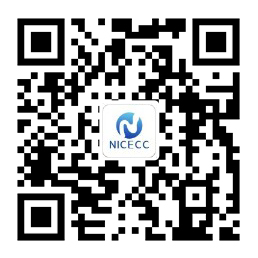The implementation of an environmental management system refers to the mechanisms, resources, and various capabilities that must be possessed in order to achieve the environmental policies, goals, and indicators proposed by the organization. Including:
① Have the necessary resources: human, material and financial resources;
②Establish a scientific management operation mechanism-corresponding institutions and personnel;
③ Formulate clear responsibilities-general manager, environmental supervisor, all managers, marketing personnel, accounting personnel, all employees, etc.;
④Training of environmental knowledge and skills;
⑤ Establish smooth internal and external information exchange channels;
⑥ Formulate a complete set of management documents and take necessary document control measures;
⑦ There should be strict emergency response measures in the event of an emergency during operation.
All of the above are the necessary conditions for the implementation of the environmental management system and the key to the examination of the organization.
(1) Construct an environmental management system. The environmental management system is an enterprise's planned and coordinated environmental management activities, and is an internal management tool of the enterprise. Enterprises can establish an environmental management system separately according to their own specific conditions and scale, and in accordance with the requirements of ISO14000, or incorporate the contents of the environmental management system into the management system when implementing ISO14000. The activities of the enterprise from product design, raw material selection and procurement, process manufacturing, and product delivery and use shall be built according to the ISOI4000 standard: a set of modern scientific and technological management system and production environment based on ecological civilization shall be established. The whole process of raw materials procurement, packaging and decoration, marketing strategy and other management processes establishes a sound and standardized environmental management innovation mechanism.
(2) Implement cleaner production. According to the description of cleaner production in China’s Agenda 21, cleaner production refers to the implementation of pollution control in the entire process of industrial production with energy conservation, consumption reduction and pollution reduction as the goal, and management and technology as the means to minimize the generation of pollutants. A comprehensive measure The implementation of Qingjiji production by an enterprise shall include the two meanings of clean production process and clean product. The former requires no or less pollution to the environment during the production process, and protects the health of employees as much as possible, and the latter requires that the products do not cause damage to the environment. The key to the implementation of cleaner production is to determine the technical methods of cleaner production. Enterprises can conduct detailed analysis of specific production processes and operations through cleaner production audits to determine how to carry out technical updates, material replacement or labor protection to minimize the chance of environmental pollution. .
(3) Actively strive for environmental marks. Environmental marks are also known as green marks and ecological marks. It is a certification mark of a product. It shows that the product is not only of qualified quality, but also meets specific environmental protection requirements during production, use, treatment and disposal, compared with similar products. , With environmental advantages such as low toxicity and less harm, and resource conservation. Environmental labels and declarations are one of the tools of environmental management and a theme of the IS014000 series of standards. The IS014000 system is focused on environmental management standards in the production process of the product, and the environmental label is the environmental standard in the process of product use and recycling. The two complement each other. Through the implementation of the dual green strategy of environmental management system and environmental label certification system for products, enterprises will greatly enhance the international market and competitiveness. (4) Improve the environmental management innovation awareness of all employees. Employees must be made aware that the implementation of IS014000 is the need for enterprise development. Strengthen environmental management and implement IOSO14000 seriously is responsible for the environment on which human beings depend, is responsible for consumers, and is responsible for future generations. At the same time, it also helps companies develop green products, develop environmental protection technologies, and establish sustainable development. Export commodity structure. To this end, enterprises should actively strengthen environmental protection popularization and education, educate, guide, and encourage employees to coordinate the development of the enterprise with ecological environmental protection and the common development of the whole society, so that all employees can participate in environmental management.
If an enterprise (or other organization) wants to obtain the ISO14001 environmental management system certificate, it first needs to establish an environmental management system (you can seek the help of a consulting agency if necessary). After the system has been running for 3 months, apply for certification to a third-party certification body The certification body will review the environmental management system it has established in accordance with the principles of fairness, reasonableness and standardization. If it passes, the certification body will issue a certificate. If it fails, the certification body will issue a non-conformance and the enterprise will correct it. The enterprise then conducts a follow-up audit and issues a certificate if it passes. At present, there are dozens of environmental management system certification bodies in China. Enterprises can comprehensively consider the certification level of these certification bodies, the business capabilities of certification personnel, the credibility of the certification body and the value-added effects that may bring to the organization when selecting certification bodies. Factors such as certification costs, and then select the appropriate certification body.









